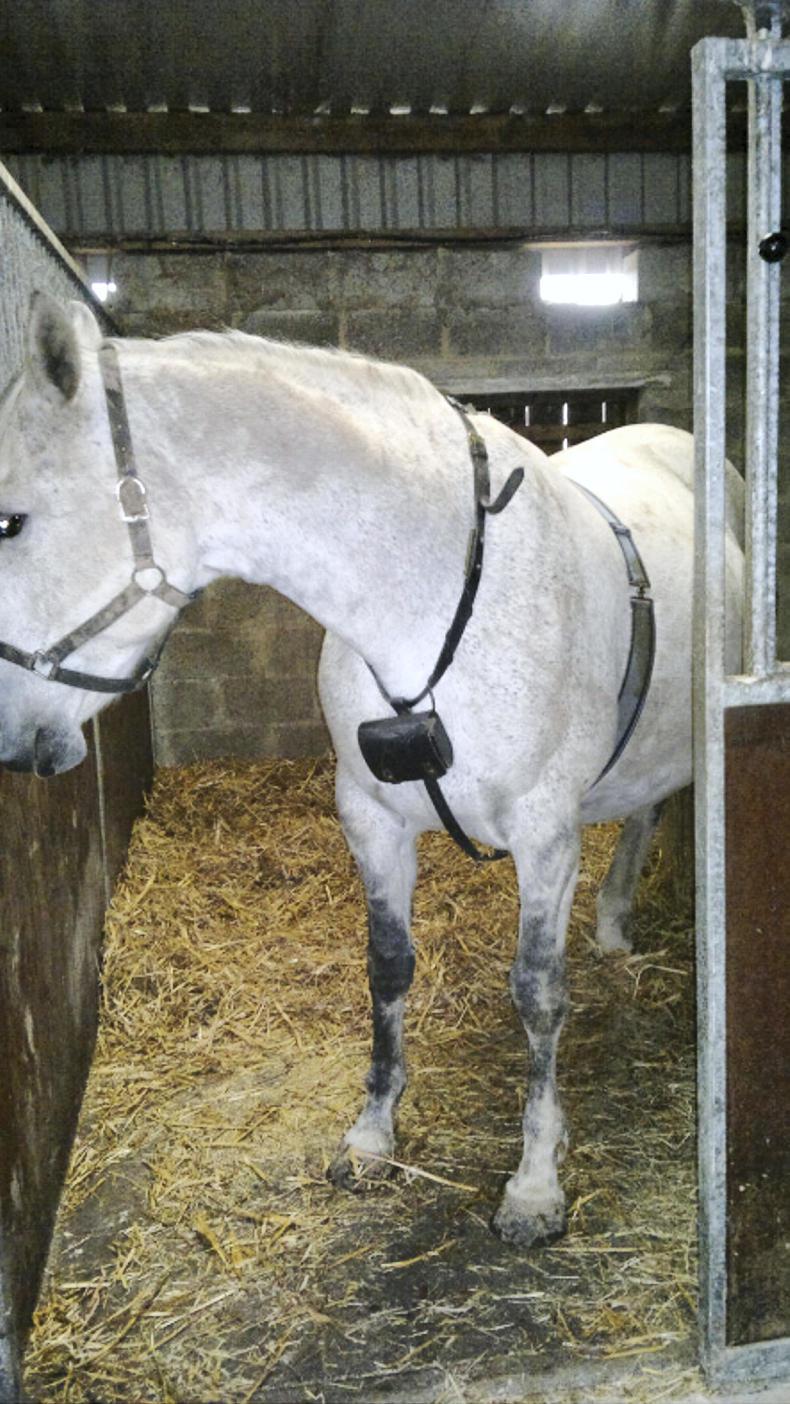AN attended delivery will allow the breeder time to detect any problems during the birth, or immediately after, which can greatly increase the chances of a healthy foal and mare.
Foaling alarms are designed to notify the person responsible that the mare is in labour. The are a range of different devices on the market, but they all have the same basic principle – when the mare goes into labour, a signal is transmitted from the device to a receiver that either sounds an alarm or calls a telephone number.
The differences in the devices are their position on the mare and how they are activated. Below are some examples of what’s on the market.
FOALERT
The Foalert transmitter is sutured to the vulva lips by a veterinarian approximately one to two weeks prior to the expected delivery date or when you are concerned that the mare needs constant attention.
The physical separation of the vulva lips during the early stages of labour pulls the actuating magnet from the transmitter. When this occurs, a silent radio signal is sent to the receiver which then sounds an audible alarm and activates any accessories attached to the receiver.
Both a long range and a standard range receiver is available. The long range receiver has a range of 1,000-1,200 feet, while the standard range receiver is typically used to monitor indoor births and has a range of 150-200 feet.
DOS AND DON’TS
Lisieux Stud have used Foalert for many years and here are their dos and don’ts when using this alarm system:
Do
Do not
For more information visit abfohlsystem.de
EQUIFONE
The EquiFone transmitter is placed in a small pouch, which is then attached to the mares headcollar, just forward of the throat area. When the mare lies flat out in the foaling position, the transmitter sends a signal to the receiver, which then calls one to four pre-stored telephone numbers and transmits a pre-recorded message to alert the breeder to the fact that the mare is lying in the foaling position.
There is a built in delay of 10 seconds before the transmitter sends the signal to the receiver/dialer, to prevent false alarms in the event the mare just lies down and gets up again.
For more information visit foalingalarm.com
BIRTH ALARM
The transmitter is attached to an anti-roll girth that is placed around the mare’s withers without bothering the horse in any way. You put the receiver in a place of your choice. The transmitter registers the time at which the horse takes up the typical birthing position and then gives an alarm signal after 7.6 seconds.
At this point it is virtually certain that it is a contraction. Birth Alarm has been extremely successful on the market since 1997.
For more information visit birthalarm.com
SAFEMATE
SAFEMATE consists of a receiver and a harness with a transmitter. The robust leather harness with transmitter should be placed on the mare in good time, preferably 14 days before the calculated birth date.
Before birth, the muscles in the mare’s rear part will quiver and make small contractions, like a warm-up for the upcoming birth, and this makes the mare sweat. The SAFEMATE foaling system measures the level of the mare’s sweat every 10 seconds, and sends an alarm signal when it analyses that the sweat secretion increases.
The receiver is activated via radio signal and will then alert you with light and sound signal.
If you have purchased a Caller Unit, you will also receive a call or an alarm text message.
For more information visit baltichorse.eu
